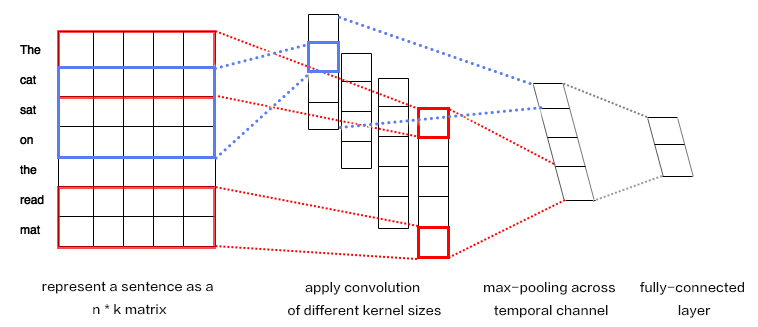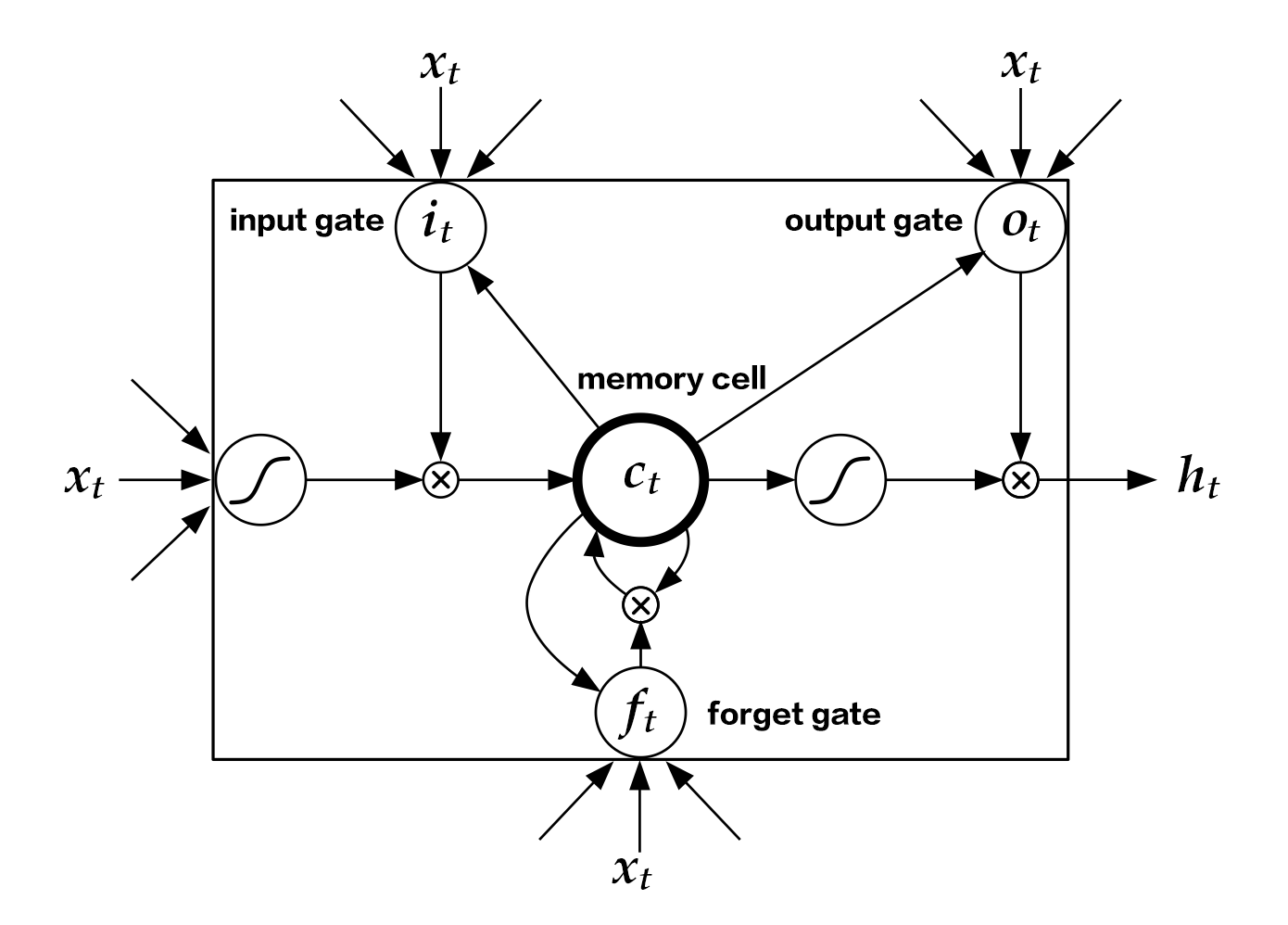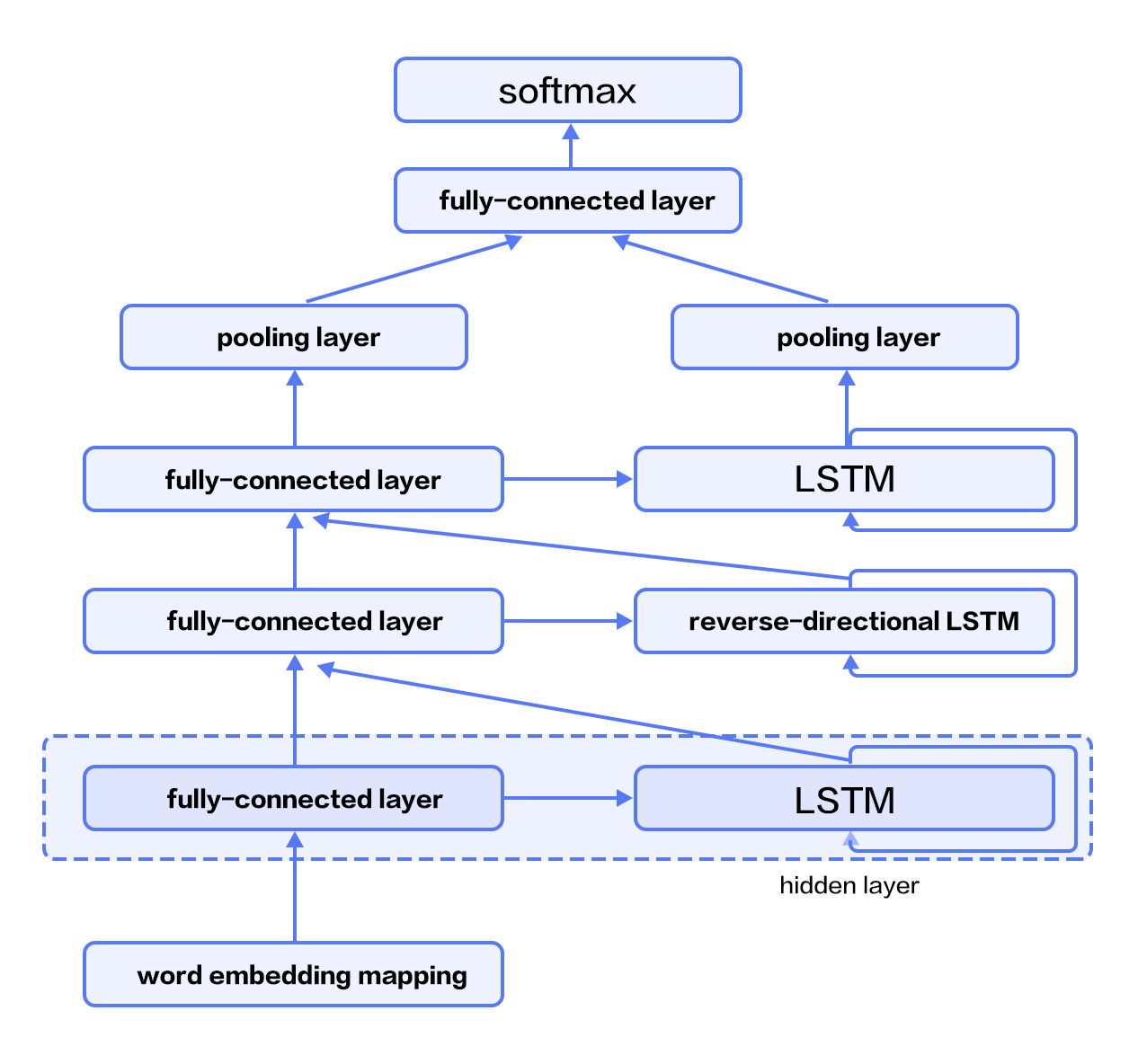# Sentiment Analysis
The source codes of this section can be located at [book/understand_sentiment](https://github.com/PaddlePaddle/book/tree/develop/understand_sentiment). First-time users may refer to PaddlePaddle for [Installation guide](https://github.com/PaddlePaddle/Paddle/blob/develop/doc/getstarted/build_and_install/docker_install_en.rst).
## Background
In natural language processing, sentiment analysis refers to describing emotion status in texts. The texts may refer to a sentence, a paragraph or a document. Emotion status can be a binary classification problem (positive/negative or happy/sad), or a three-class problem (positive/neutral/negative). Sentiment analysis can be applied widely in various situations, such as online shopping (Amazon, Taobao), travel and movie websites. It can be used to grasp from the reviews how the customers feel about the product. Table 1 is an example of sentiment analysis in movie reviews:
| Movie Review | Category |
| -------- | ----- |
| Best movie of Xiaogang Feng in recent years!| Positive |
| Pretty bad. Feels like a tv-series from a local TV-channel | Negative |
| Politically correct version of Taken ... and boring as Heck| Negative|
|delightful, mesmerizing, and completely unexpected. The plot is nicely designed.|Positive|
Table 1 Sentiment Analysis in Movie Reviews
In natural language processing, sentiment analysis can be categorized as a **Text Classification problem**, i.e., to categorize a piece of text to a specific class. It involves two related tasks: text representation and classification. Before deep learning becomes heated, the main-stream methods for the former include BOW (bag of words) and topic modeling, while the latter contain SVM(support vector machine), LR(logistic regression).
For a piece of text, BOW model ignores its word order, grammar and syntax, and regard it as a set of words, so BOW does not capture all the information in the text. For example, “this movie is extremely bad“ and “boring, dull and empty work” describe very similar semantic with low similarity in sense of BOW. Also, “the movie is bad“ and “the movie is not bad“ have high similarity with BOW feature, but they express completely opposite semantics.
In this chapter, we introduce our deep learning model which handles these issues in BOW. Our model embeds texts into a low-dimensional space and takes word order into consideration. It is an end-to-end framework, and has large performance improvement over traditional methods \[[1](#Reference)\].
## Model Overview
The model we used in this chapter is the CNN (Convolutional Neural Networks) and RNN (Recurrent Neural Networks) with some specific extension.
### Convolutional Neural Networks for Texts (CNN)
Convolutional Neural Networks are always applied in data with grid-like topology, such as 2-d images and 1-d texts. CNN can combine extracted multiple local features to produce higher-level abstract semantics. Experimentally, CNN is very efficient for image and text modeling.
CNN mainly contains convolution and pooling operation, with various extensions. We briefly describe CNN here with an example \[[1](#Refernce)\]. As shown in Figure 1:

Figure 1. CNN for text modeling.
Assuming the length of the sentence is $n$, where the $i$-th word has embedding as $x_i\in\mathbb{R}^k$,where $k$ is the embedding dimensionality.
First, we concatenate the words together: we piece every $h$ words as a window of length $h$: $x_{i:i+h-1}$. It refers to $x_{i},x_{i+1},\ldots,x_{i+h-1}$, where $i$ is the first word in the window, ranging from $1$ to $n-h+1$: $x_{i:i+h-1}\in\mathbb{R}^{hk}$.
Next, we apply the convolution operation: we apply the kernel $w\in\mathbb{R}^{hk}$ in each window, extracting features $c_i=f(w\cdot x_{i:i+h-1}+b)$,
where $b\in\mathbb{R}$ is the bias and $f$ is a non-linear activation function such as $sigmoid$. Applying CNN on every window ${x_{1:h},x_{2:h+1},\ldots,x_{n-h+1:n}}$ produces a feature map as:
$$c=[c_1,c_2,\ldots,c_{n-h+1}], c \in \mathbb{R}^{n-h+1}$$
Next, we apply max pooling over time to represent the whole sentence $\hat c$, which is the maximum element across the feature map:
$$\hat c=max(c)$$
In real applications, we will apply multiple CNN kernels on the sentences. It can be implemented efficiently by concatenating the kernels together as a matrix. Also, we can use CNN kernels with different kernel size (as shown in Figure 1 in different colors).
Finally, the CNN features are concatenated together to produce a fixed-length representation, which can be combined with a softmax for sentiment analysis problem.
For short texts, above CNN model can achieve high accuracy \[[1](#Reference)\]. If we want to extract more abstract representation, we may apply a deeper CNN model \[[2](#Reference),[3](#Reference)\].
### Recurrent Neural Network (RNN)
RNN is an effective model for sequential data. Theoretical, the computational ability of RNN is Turing-complete \[[4](#Reference)\]. NLP is a classical sequential data, and RNN (especially its variant LSTM\[[5](#Reference)\]) achieves State-of-the-Art performance on various tasks in NLP, such as language modeling, syntax parsing, POS-tagging, image captioning, dialog, machine translation and so forth.

Figure 2. An illustration of an unrolled RNN across “time”.
As shown in Figure 2, we unroll an RNN: at $t$-th time step, the network takes the $t$-th input vector and the latent state from last time-step $h_{t-1}$ as inputs and compute the latent state of current step. The whole process is repeated until all inputs are consumed. If we regard the RNN as a function $f$, it can be formulated as:
$$h_t=f(x_t,h_{t-1})=\sigma(W_{xh}x_t+W_{hh}h_{h-1}+b_h)$$
where $W_{xh}$ is the weight matrix from input to latent; $W_{hh}$ is the latent-to-latent matrix; $b_h$ is the latent bias and $\sigma$ refers to the $sigmoid$function.
In NLP, words are first represented as a one-hot vector and then mapped to an embedding. The embedded feature goes through an RNN as input $x_t$ at every time step. Moreover, we can add other layers on top of RNN. e.g., a deep or stacked RNN. Also, the last latent state can be used as a feature for sentence classification.
### Long-Short Term Memory (LSTM)
For data of long sequence, training RNN sometimes has gradient vanishing and explosion problem \[[6](#)\]. To solve this problem Hochreiter S, Schmidhuber J. (1997) proposed the LSTM(long short term memory\[[5](#Reference)\]).
Compared with simple RNN, the structrue of LSTM has included memory cell $c$, input gate $i$, forget gate $f$ and output gate $o$. These gates and memory cells largely improves the ability of handling long sequences. We can formulate LSTM-RNN as a function $F$ as:
$$ h_t=F(x_t,h_{t-1})$$
$F$ contains following formulations\[[7](#Reference)\]:
\begin{align}
i_t & = \sigma(W_{xi}x_t+W_{hi}h_{h-1}+W_{ci}c_{t-1}+b_i)\\\\
f_t & = \sigma(W_{xf}x_t+W_{hf}h_{h-1}+W_{cf}c_{t-1}+b_f)\\\\
c_t & = f_t\odot c_{t-1}+i_t\odot tanh(W_{xc}x_t+W_{hc}h_{h-1}+b_c)\\\\
o_t & = \sigma(W_{xo}x_t+W_{ho}h_{h-1}+W_{co}c_{t}+b_o)\\\\
h_t & = o_t\odot tanh(c_t)\\\\
\end{align}
In the equation,$i_t, f_t, c_t, o_t$ stand for input gate, forget gate, memory cell and output gate separately; $W$ and $b$ are model parameters. The $tanh$ is a hyperbolic tangent, and $\odot$ denotes an element-wise product operation. Input gate controls the magnitude of new input into the memory cell $c$; forget gate controls memory propagated from the last time step; output gate controls output magnitude. The three gates are computed similarly with different parameters, and they influence memory cell $c$ separately, as shown in Figure 3:

Figure 3. LSTM at time step $t$ [7].
LSTM enhances the ability of considering long-term reliance, with the help of memory cell and gate. Similar structures are also proposed in Gated Recurrent Unit (GRU)\[[8](Reference)\] with simpler design. **The structures are still similar to RNN, though with some modifications (As shown in Figure 2), i.e., latent status depends on input as well as the latent status of last time-step, and the process goes on recurrently until all input are consumed:**
$$ h_t=Recrurent(x_t,h_{t-1})$$
where $Recrurent$ is a simple RNN, GRU or LSTM.
### Stacked Bidirectional LSTM
For vanilla LSTM, $h_t$ contains input information from previous time-step $1..t-1$ context. We can also apply an RNN with reverse-direction to take successive context $t+1…n$ into consideration. Combining constructing deep RNN (deeper RNN can contain more abstract and higher level semantic), we can design structures with deep stacked bidirectional LSTM to model sequential data\[[9](#Reference)\].
As shown in Figure 4 (3-layer RNN), odd/even layers are forward/reverse LSTM. Higher layers of LSTM take lower-layers LSTM as input, and the top-layer LSTM produces a fixed length vector by max-pooling (this representation considers contexts from previous and successive words for higher-level abstractions). Finally, we concatenate the output to a softmax layer for classification.

Figure 4. Stacked Bidirectional LSTM for NLP modeling.
## Dataset
We use [IMDB](http://ai.stanford.edu/%7Eamaas/data/sentiment/) dataset for sentiment analysis in this tutorial, which consists of 50,000 movie reviews split evenly into 25k train and 25k test sets. In the labeled train/test sets, a negative review has a score <= 4 out of 10, and a positive review has a score >= 7 out of 10.
`paddle.datasets` package encapsulates multiple public datasets, including `cifar`, `imdb`, `mnist`, `moivelens`, and `wmt14`, etc. There's no need for us to manually download and preprocess IMDB.
After issuing a command `python train.py`, training will start immediately. The details will be unpacked by the following sessions to see how it works.
## Model Structure
### Initialize PaddlePaddle
We must import and initialize PaddlePaddle (enable/disable GPU, set the number of trainers, etc).
```python
import sys
import paddle.v2 as paddle
# PaddlePaddle init
paddle.init(use_gpu=False, trainer_count=1)
```
As alluded to in section [Model Overview](#model-overview), here we provide the implementations of both Text CNN and Stacked-bidirectional LSTM models.
### Text Convolution Neural Network (Text CNN)
We create a neural network `convolution_net` as the following snippet code.
Note: `paddle.networks.sequence_conv_pool` includes both convolution and pooling layer operations.
```python
def convolution_net(input_dim, class_dim=2, emb_dim=128, hid_dim=128):
data = paddle.layer.data("word",
paddle.data_type.integer_value_sequence(input_dim))
emb = paddle.layer.embedding(input=data, size=emb_dim)
conv_3 = paddle.networks.sequence_conv_pool(
input=emb, context_len=3, hidden_size=hid_dim)
conv_4 = paddle.networks.sequence_conv_pool(
input=emb, context_len=4, hidden_size=hid_dim)
output = paddle.layer.fc(input=[conv_3, conv_4],
size=class_dim,
act=paddle.activation.Softmax())
lbl = paddle.layer.data("label", paddle.data_type.integer_value(2))
cost = paddle.layer.classification_cost(input=output, label=lbl)
return cost
```
1. Define input data and its dimension
Parameter `input_dim` denotes the dictionary size, and `class_dim` is the number of categories. In `convolution_net`, the input to the network is defined in `paddle.layer.data`.
1. Define Classifier
The above Text CNN network extracts high-level features and maps them to a vector of the same size as the categories. `paddle.activation.Softmax` function or classifier is then used for calculating the probability of the sentence belonging to each category.
1. Define Loss Function
In the context of supervised learning, labels of the training set are defined in `paddle.layer.data`, too. During training, cross-entropy is used as loss function in `paddle.layer.classification_cost` and as the output of the network; During testing, the outputs are the probabilities calculated in the classifier.
#### Stacked bidirectional LSTM
We create a neural network `stacked_lstm_net` as below.
```python
def stacked_lstm_net(input_dim,
class_dim=2,
emb_dim=128,
hid_dim=512,
stacked_num=3):
"""
A Wrapper for sentiment classification task.
This network uses bi-directional recurrent network,
consisting three LSTM layers. This configure is referred to
the paper as following url, but use fewer layrs.
http://www.aclweb.org/anthology/P15-1109
input_dim: here is word dictionary dimension.
class_dim: number of categories.
emb_dim: dimension of word embedding.
hid_dim: dimension of hidden layer.
stacked_num: number of stacked lstm-hidden layer.
"""
assert stacked_num % 2 == 1
layer_attr = paddle.attr.Extra(drop_rate=0.5)
fc_para_attr = paddle.attr.Param(learning_rate=1e-3)
lstm_para_attr = paddle.attr.Param(initial_std=0., learning_rate=1.)
para_attr = [fc_para_attr, lstm_para_attr]
bias_attr = paddle.attr.Param(initial_std=0., l2_rate=0.)
relu = paddle.activation.Relu()
linear = paddle.activation.Linear()
data = paddle.layer.data("word",
paddle.data_type.integer_value_sequence(input_dim))
emb = paddle.layer.embedding(input=data, size=emb_dim)
fc1 = paddle.layer.fc(input=emb,
size=hid_dim,
act=linear,
bias_attr=bias_attr)
lstm1 = paddle.layer.lstmemory(
input=fc1, act=relu, bias_attr=bias_attr, layer_attr=layer_attr)
inputs = [fc1, lstm1]
for i in range(2, stacked_num + 1):
fc = paddle.layer.fc(input=inputs,
size=hid_dim,
act=linear,
param_attr=para_attr,
bias_attr=bias_attr)
lstm = paddle.layer.lstmemory(
input=fc,
reverse=(i % 2) == 0,
act=relu,
bias_attr=bias_attr,
layer_attr=layer_attr)
inputs = [fc, lstm]
fc_last = paddle.layer.pooling(
input=inputs[0], pooling_type=paddle.pooling.Max())
lstm_last = paddle.layer.pooling(
input=inputs[1], pooling_type=paddle.pooling.Max())
output = paddle.layer.fc(input=[fc_last, lstm_last],
size=class_dim,
act=paddle.activation.Softmax(),
bias_attr=bias_attr,
param_attr=para_attr)
lbl = paddle.layer.data("label", paddle.data_type.integer_value(2))
cost = paddle.layer.classification_cost(input=output, label=lbl)
return cost
```
1. Define input data and its dimension
Parameter `input_dim` denotes the dictionary size, and `class_dim` is the number of categories. In `stacked_lstm_net`, the input to the network is defined in `paddle.layer.data`.
1. Define Classifier
The above stacked bidirectional LSTM network extracts high-level features and maps them to a vector of the same size as the categories. `paddle.activation.Softmax` function or classifier is then used for calculating the probability of the sentence belonging to each category.
1. Define Loss Function
In the context of supervised learning, labels of the training set are defined in `paddle.layer.data`, too. During training, cross-entropy is used as loss function in `paddle.layer.classification_cost` and as the output of the network; During testing, the outputs are the probabilities calculated in the classifier.
To reiterate, we can either invoke `convolution_net` or `stacked_lstm_net`.
```python
word_dict = paddle.dataset.imdb.word_dict()
dict_dim = len(word_dict)
class_dim = 2
# option 1
cost = convolution_net(dict_dim, class_dim=class_dim)
# option 2
# cost = stacked_lstm_net(dict_dim, class_dim=class_dim, stacked_num=3)
```
## Model Training
### Define Parameters
First, we create the model parameters according to the previous model configuration `cost`.
```python
# create parameters
parameters = paddle.parameters.create(cost)
```
### Create Trainer
Before jumping into creating a training module, algorithm setting is also necessary.
Here we specified `Adam` optimization algorithm via `paddle.optimizer`.
```python
# create optimizer
adam_optimizer = paddle.optimizer.Adam(
learning_rate=2e-3,
regularization=paddle.optimizer.L2Regularization(rate=8e-4),
model_average=paddle.optimizer.ModelAverage(average_window=0.5))
# create trainer
trainer = paddle.trainer.SGD(cost=cost,
parameters=parameters,
update_equation=adam_optimizer)
```
### Training
`paddle.dataset.imdb.train()` will yield records during each pass, after shuffling, a batch input is generated for training.
```python
train_reader = paddle.batch(
paddle.reader.shuffle(
lambda: paddle.dataset.imdb.train(word_dict), buf_size=1000),
batch_size=100)
test_reader = paddle.batch(
lambda: paddle.dataset.imdb.test(word_dict), batch_size=100)
```
`feeding` is devoted to specifying the correspondence between each yield record and `paddle.layer.data`. For instance, the first column of data generated by `paddle.dataset.imdb.train()` corresponds to `word` feature.
```python
feeding = {'word': 0, 'label': 1}
```
Callback function `event_handler` will be invoked to track training progress when a pre-defined event happens.
```python
def event_handler(event):
if isinstance(event, paddle.event.EndIteration):
if event.batch_id % 100 == 0:
print "\nPass %d, Batch %d, Cost %f, %s" % (
event.pass_id, event.batch_id, event.cost, event.metrics)
else:
sys.stdout.write('.')
sys.stdout.flush()
if isinstance(event, paddle.event.EndPass):
result = trainer.test(reader=test_reader, reader_dict=reader_dict)
print "\nTest with Pass %d, %s" % (event.pass_id, result.metrics)
```
Finally, we can invoke `trainer.train` to start training:
```python
trainer.train(
reader=train_reader,
event_handler=event_handler,
feeding=feedig,
num_passes=10)
```
## Conclusion
In this chapter, we use sentiment analysis as an example to introduce applying deep learning models on end-to-end short text classification, as well as how to use PaddlePaddle to implement the model. Meanwhile, we briefly introduce two models for text processing: CNN and RNN. In following chapters, we will see how these models can be applied in other tasks.
## Reference
1. Kim Y. [Convolutional neural networks for sentence classification](http://arxiv.org/pdf/1408.5882)[J]. arXiv preprint arXiv:1408.5882, 2014.
2. Kalchbrenner N, Grefenstette E, Blunsom P. [A convolutional neural network for modelling sentences](http://arxiv.org/pdf/1404.2188.pdf?utm_medium=App.net&utm_source=PourOver)[J]. arXiv preprint arXiv:1404.2188, 2014.
3. Yann N. Dauphin, et al. [Language Modeling with Gated Convolutional Networks](https://arxiv.org/pdf/1612.08083v1.pdf)[J] arXiv preprint arXiv:1612.08083, 2016.
4. Siegelmann H T, Sontag E D. [On the computational power of neural nets](http://research.cs.queensu.ca/home/akl/cisc879/papers/SELECTED_PAPERS_FROM_VARIOUS_SOURCES/05070215382317071.pdf)[C]//Proceedings of the fifth annual workshop on Computational learning theory. ACM, 1992: 440-449.
5. Hochreiter S, Schmidhuber J. [Long short-term memory](http://web.eecs.utk.edu/~itamar/courses/ECE-692/Bobby_paper1.pdf)[J]. Neural computation, 1997, 9(8): 1735-1780.
6. Bengio Y, Simard P, Frasconi P. [Learning long-term dependencies with gradient descent is difficult](http://www-dsi.ing.unifi.it/~paolo/ps/tnn-94-gradient.pdf)[J]. IEEE transactions on neural networks, 1994, 5(2): 157-166.
7. Graves A. [Generating sequences with recurrent neural networks](http://arxiv.org/pdf/1308.0850)[J]. arXiv preprint arXiv:1308.0850, 2013.
8. Cho K, Van Merriënboer B, Gulcehre C, et al. [Learning phrase representations using RNN encoder-decoder for statistical machine translation](http://arxiv.org/pdf/1406.1078)[J]. arXiv preprint arXiv:1406.1078, 2014.
9. Zhou J, Xu W. [End-to-end learning of semantic role labeling using recurrent neural networks](http://www.aclweb.org/anthology/P/P15/P15-1109.pdf)[C]//Proceedings of the Annual Meeting of the Association for Computational Linguistics. 2015.
This tutorial is contributed by
PaddlePaddle, and licensed under a
Creative Commons Attribution-NonCommercial-ShareAlike 4.0 International License.



